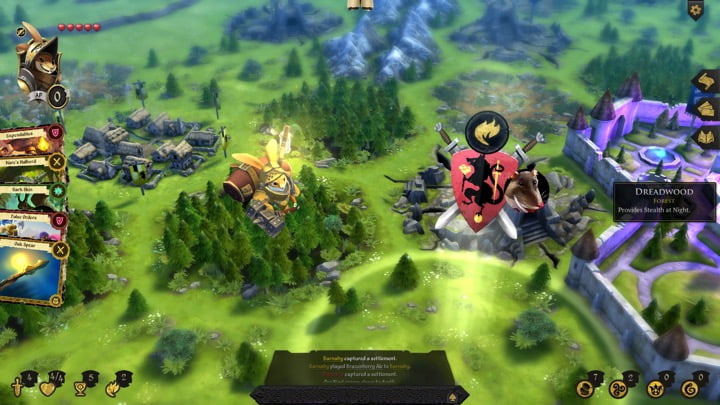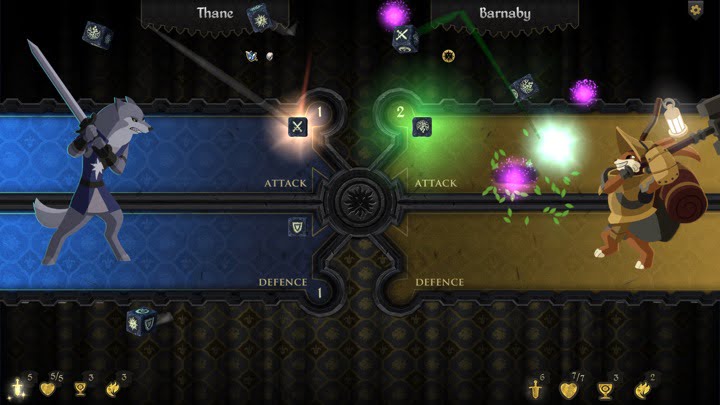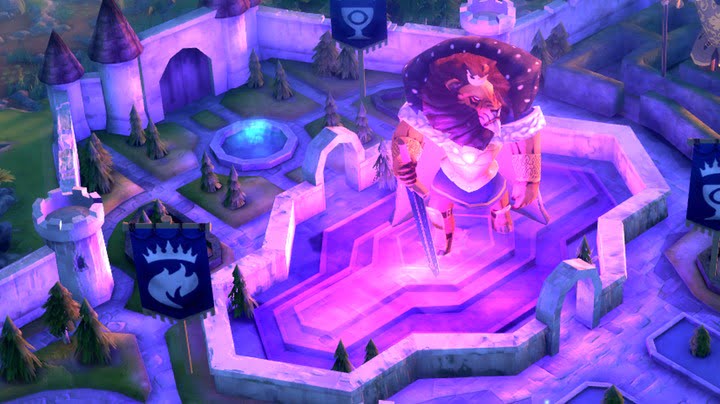In their talk at GDC Europe, Trent Kusters and Blake Mizzi from League of Geeks reveal how they took Armello from concept to video game.
The digital role-playing strategy board game was initially announced as an iPad title in 2012, with a Steam port and additional funding secured via a successful Kickstarter two years later. Released in 2015, Armello eventually came to PS4, Mac, PC, mobile and will shortly be released on Xbox One.
The idea for the game came when the founders of the Melbourne based studio saw a gap in the market for digital board games on the, then fledgling, iPad app store.
“We saw a renaissance occur in the physical boardgames world,” says Mizzi. “And we also saw that saw lack of innovation and execution occurring in digital board games.”
“We wanted to create a game where you could create stories with your friends,” adds Kusters. “That was really essential, as was the story building. We saw an opportunity to be best in genre, in this particular iPad, board games category.”

For Kusters, Mizzi, and fellow co-founder Ty Carey, it was important that the game was not designed from the ground up as a digital experience. They embarked on a lengthy process of iteration using paper and card prototypes. These homemade mock-ups used everything from poker chips and Monopoly money, to clay figurines Kusters found in an antique shop to help build out and refine the gameplay experience.
“We went through dozens and dozens of prototypes,” says Mizzi. “We spent nearly ten months playing paper prototypes, getting together every Wednesday. I would bring a concept to the table and we’d all play it and the next week Trent would bring one in response, and the next week Ty would bring one. And each time one of us brought new concept to the table it would be tweaked with mechanics from the previous iteration, maybe the loss of a mechanic, or the introduction of a new one.”
These physical prototypes helped to ensure the game’s concept was sound, its game design was compelling and that it met the thematic objectives outlined by the team. Rather than basing the experience on existing video game genres Kusters explained explained that they where aiming for a more emotional tie to the physical experience.
“The whole question was can we bring table-top games to life,” he says.

The core of Armello was defined in ten points. These were the aspects that the team determined were the essential tenets. These were then captured in a Game Design Document that was used for two years until the Armello went into Steam Early Access. At this point user stories plus Google docs and spreadsheets provided the necessary means to track and build out the experience.
Core of Armello
- Hero centric
- Real-time play
- Turn-based play
- Hex layout with objectives
- Race the clock gameplay
- Mechanical eco-system
- Fast-paced progression
- Conflict through proximity
- Experimentation
- Storytelling potential
To breath life into the board game experience League of Geeks knew that the game’s characters had to be brimming with character and personality.
“How do we take that analogue experience and make it digital? How do we breath life into it?” Kusters says, describing the challenge they faced.
Having animated three-dimensional characters was key.
“This was something we knew we wanted from the start. We wanted unique heroes that were actual characters in the world that animated and engaging with each other,” he says.
The same approach was applied to many other aspects of the game. The cards, for example, are individually animated – all 130 of them – and act as a window into Armello’s world for the player. Particular attention was also paid to the environments to make them appear seamless, despite their hex-based structure.
“We didn’t want people looking at the game and just seeing hexes everywhere and saying ‘I’m not into strategy games’,” says Kusters. “We actually only show the hexes when it’s your turn and then we hide them when it’s not.”
“It’s giving players context,” says Kusters. “A lot of board games are abstract by their very nature. And then when you go to video games we get little bit more to work with, but we are still staring at a hundred metre tall rabbit standing in forest.”
“It’s literally absurd but we look past this a lot of the time. What we try to do with Armello – and how we help bring it to life – is to provide the players with as many tools as they can possibly have to see past this absurdity.”
An example can be found in Armello’s first trailer which consists of artwork, tone and story, but no gameplay. The intention was to forge a connection between potential player and the world of Armello, avoiding any preconceptions the genre might bring.

Kusters and Mizzi concluded by speaking about the one of the biggest challenges: communicating information to the player.
“You can see everything when you’re playing a board game,” says Kusters. “You can only see what we put on the screen – and what we telegraph – in a digital game. And although we use that to our benefit it has also been the biggest bane all throughout development.”
Since release, user feedback has become all important, helping iron out the kinks and making sure that the game always provides the player with the information they need as clearly as possible.
Despite these challenges Mizzi and Kusters put the game’s success down to that inital focused and iterative design process.
“We spent ten months figuring out what Armello was before we even started development and that helped us execute on that product.” says Kusters.






